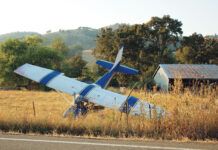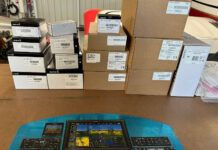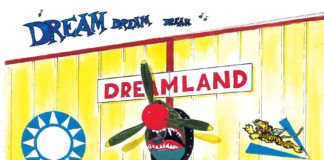In the middle of February, when our May issue was going on press, the FAA published the final report from the Amateur-Built Aircraft Aviation Rulemaking Committee. The 15-page document outlines the efforts of the FAA and industry representatives over the last two years to adapt approval guidance to inevitable changes in the kitbuilding community. A draft proposal was due at the time this issue of the magazine was published, followed by a public-comment period, and then the final set of revisions by October 2008. Lets stop to forestall some needless panic right now: These new rules are expected to impact manufacturers and builders in the future. Any kit aircraft begun under the old rules is expected to be approved under the old rules as well.
So, current builders are in the clear. For the future? Well see…
The reason for creating the committee and reconsidering the guidance is stated in the final report as “the Committee agreed that many amateur-builders use too much commercially provided assistance when fabricating and assembling the major portion of an amateur-built aircraft from a kit.” Well get back to that, but its important to understand at the outset that the FAA does not intend to change the relevant FARs (Federal Air Regulations) that govern Experimental aircraft. In fact, FAR 21.191 says only: “Experimental certificates are issued for the following purposes: …(g) Operating amateur-built aircraft. Operating an aircraft the major portion of which has been fabricated and assembled by persons who undertook the construction project solely for their own education or recreation.” Thats it.
Where the Guidance Comes From
Because the underlying FAR is so vague, there is a collection of guidance documents under the term Advisory Circulars. Two are dominant in our world: AC20-27 Certification and Operation of Amateur-Built Aircraft and AC20-139 Commercial Assistance During Construction of Amateur-Built Aircraft. Both ACs also include FAA Form 8000-38 Fabrication Assembly Operation Checklist. Its this form, all of five pages long, which is under the most scrutiny, in part because much of what it says is ambiguous.
For example, under the Wing section it says “Fabricate wingspars,” followed by two check boxes, one for the kit manufacturer and one for the builder. It does not specify what “fabricate” is. Does that mean to hew from raw materials? Clearly by the standards set by the “approved” kits in existence thats not the case. But just what does the builder need to “fabricate” on the wingspar to get credit for its construction?
The generally accepted rule is that some form of “fabrication” needs to be done on the spar. For example, drilling a hole might be fabrication; making a bracket from aluminum angle would be; bonding in a reinforcement to a fiberglass spar in a composite aircraft is fine. Nowhere does it say that the builder must make the whole spar to get credit for the fabrication, but there is language in the ACs that suggests if you “assembled your aircraft from a kit composed of completely finished, prefabricated components, parts, or precut or predrilled materials…” your kit aircraft would not be eligible for registration as an Experimental/Amateur-Built.
Its in the pre-approval process to get on the listing of eligible aircraft that these details are worked out. This listing of “pre-approved” kits is maintained by the FAA but populated by inspectors with considerable latitude in interpretation. The committee agreed that the application of the approval process had wide variances. Part of the FAAs process after this last round of changes will be to create a single task force to look at all new submissions to this list. (What is worrying to some is that it might apply new criteria to existing kits, in effect taking them off the approved list even if the kit is the same as when it was first inspected.) As part of that plan, the FAA suspended inspection of new kit designs. Somewhat humorously, a few aviation news services picked up on this as the main part of the story, scaring builders into thinking that there would be no final inspections of individual aircraft until this is worked out. Not the case; those will continue until new guidance comes along.
One Check, Two Checks
While the FAA and the committee agreed on many agenda items, the stickler could be the one with the greatest impact. The FAA flatly rejected retaining a “dual check” system on the 8000-38 checklist. For example, if the manufacturer built part of the wingspar and the builder “fabricated” part, both would receive credit for the item. Instead, the FAA is pushing for a more elaborate checklist system that identifies what the manufacturer did, what the builder did and, a new item, which components had the benefit of commercial assistance. In trying to define the “major portion” of any of these processes, the FAA will face a difficult challenge.
Members of the working group were keen to retain a task-based accounting system, allowing the builder to receive credit for the operation after a “reasonable” amount of the work had been completed. Historically, this has served the community well; after you’ve built your twelfth wingrib, you’re not much smarter than after, say, the fifth. Moreover, how do you define the effort? By time? It takes a CNC metal stamper about a second to blast an aluminum wingrib out of sheet stock; that process could take hours for the individual builder. How do you rationalize that?
In the months to come, just how the FAA elects to define this aspect of “major portion” will have a profound effect on the industry.
Initial Reactions
The Experimental Aircraft Association responded quickly, outlining the issues but also saying that “not included in the ARC report was EAAs position, shared by the kit manufacturers: 1. Protect the current rights of builders to build the quick-built aircraft kits that FAA has included on the 51 percent approved list, and that our members have been building over the last decade. The FAA has to recognize that for more than a decade it has set precedent regarding the various kits and practices that they have said meet the standard. The FAA needs to honor its precedent and continue to approve those kits. 2. Protect the 51 percent rule and with it, the builders ability to build an amateur-built aircraft of any complexity, power or size.”
“The vast majority [of the report] is what we expected. We still don’t know what the FAA intends,” said Mikael Via, of Glasair Aircraft. “Were waiting to see what the policies and orders state. Nothing here affects our existing customers.” Asked if the company’s Two Weeks to Taxi program will be impacted by the changes, Via said he wouldn’t know until he saw the final rules.
Jeremy Monnett, of Sonex Aircraft, said his company has always taken the 51% rule to heart, and enforcement is the key to ensuring all kit manufacturers and builders adhere to the rules. “The resources required to carry out this enforcement have not been made available by the FAA over the last few years,” Monnett said in a news release. “Without these resources, enforcement loosens and the rules are pushed beyond their spirit and intent, compromising the rules continued existence.”
Among the current kit manufacturers, Vans Aircraft is indisputably the
volume leader. Nearly 5600 RVs are flying, and like all other kit manufacturers, the company has a lot to lose if approval of kitbuilt airplanes becomes significantly stricter. Founder Dick VanGrunsven was concerned but far from panicky. In fact, he is “cautiously optimistic” about the overall picture for homebuilts, which includes the potential for certification under the Primary Category. (See “Around the Patch,” Page 2 for more.)
For now, VanGrunsven is focusing on the short term, rallying builders and pilots of all Experimental/Amateur-Built aircraft to contact the FAA in support of the existing rule structure. “We need to get the word out,” he said, “so builders can write the FAA. We need to prove that what we have now [in quickbuild kits] is good and that builders benefit. Pilots and builders have a big part to play. Potentially, it’s the best thing we can do right now.”
He is concerned that changes to the rules “could be disastrous” if taken to the extreme. “We have had similar FAA meetings before, where little change resulted,” he said. “And we thought this round was more about fine-tuning certain regulations and directives. We spent a lot of time debating shall or must, but we were surprised where it went regarding the compliance checklist.”
In its report, the FAA said it was in agreement with several proposals offered by the Amateur-Built Aircraft Aviation Rulemaking Committee to reduce “excessive” commercial builder assistance, but could not reach consensus on how to determine who gets credit for fabrication and assembly among the kit manufacturer, commercial assistance and the builder of record. In the report, the FAA gave little hint on how the new guidance would be written. “But indications are that the checklist [the 8000-38 form] will get tighter,” VanGrunsven said.
Considering the ways new rules might alter the makeup of quickbuild kits as we know them, VanGrunsven said, “The best case is that the quickbuild kits will become a bit more basic, maybe putting 10 to 20% back onto the builder. We could do that and still have a reasonably attractive product. Over the years, FAA-accepted rules interpretations have permitted quckbuild kits to evolve as they have, benefiting both builders and kit companies. Our job will be to convince the FAA that the way the industry has evolved [in terms of the quickbuild kits themselves] is generally favorable.”
According to VanGrunsven, “Our objective was to stay as close as possible to the current rules. In our initial proposal, we wanted to look at a couple of current quickbuild kits and create a new checklist from that. Now it looks like the FAA is going to create the new checklist first and then see how it fits the actual kits.”
How Far Back to Basics?
There are many aspects to the possible restructuring of the ACs guiding Experimental aviations “major portion” rules. The state of the art, particularly for composite aircraft, is a high level of factory fabrication of major structures. Large composite pieces require special tools including bulky, expensive molds-perhaps even an autoclave-as well as extremely specialized knowledge to properly build the components. As modern kits now stand, the physically large portions are completed by the kit manufacturer, with assembly completed by the builder. This assembly involves bonding components together but does not generally require creation of high-strength shaped parts from scratch.
“My worry,” says Joe Bartels, CEO of Lancair, “is that the FAA is going to send us back to having the builder create parts from raw materials. That means that if the FAA has its way, my customers might have to build their Lancair Evolution by laying up raw carbon fiber in the molds. This is not what the customers want! The proposed changes, says Bartels, “could be very disruptive. How do we determine 51%…by the number of square feet of the various composite parts? Or does the fuselage count the same in number as the upper cowl?” And its not just composites that could be caught in this net. “Fabrication, as now defined by the FAA, would consider that a pre-sewn fabric envelope would be a pre-fabricated item and thus would not be counted as something for which the builder could claim credit? If my customer would have to lay up raw carbon fiber in the mold, then raw Ceconite would have to be sewn by the kit builder or he would not get credit for the fabrication of the wing/fuselage covering,” says Bartels.
Help From Outside the Airport Fence
Senator Ron Wyden (D-Oregon) has chimed in as well. “…to have the FAA propose rules that throw hundreds of Oregonians out of good paying manufacturing jobs with this proposal is just unacceptable. We’re calling for a timeout so that there can be some further opportunity to look at this issue.”
Senator James Inhofe sent a letter to the FAA on Lancairs behalf asking that the Evolution be evaluated for compliance with existing rules “regardless of the FAAs…moratorium on new aircraft kit evaluations. As you know, Lancair developed the Evolution aircraft and requested evaluation from the FAA before the announcement.”
In the meantime, as the industry waits for the FAA to publish a draft of the revised ACs, builders can continue their work with a clear conscience. “If you’re now building a 51% rule compliant kit, there’s no problem. The old rules still apply,” VanGrunsven confirmed. What those new rules will look like come this Halloween is less a sure thing.













